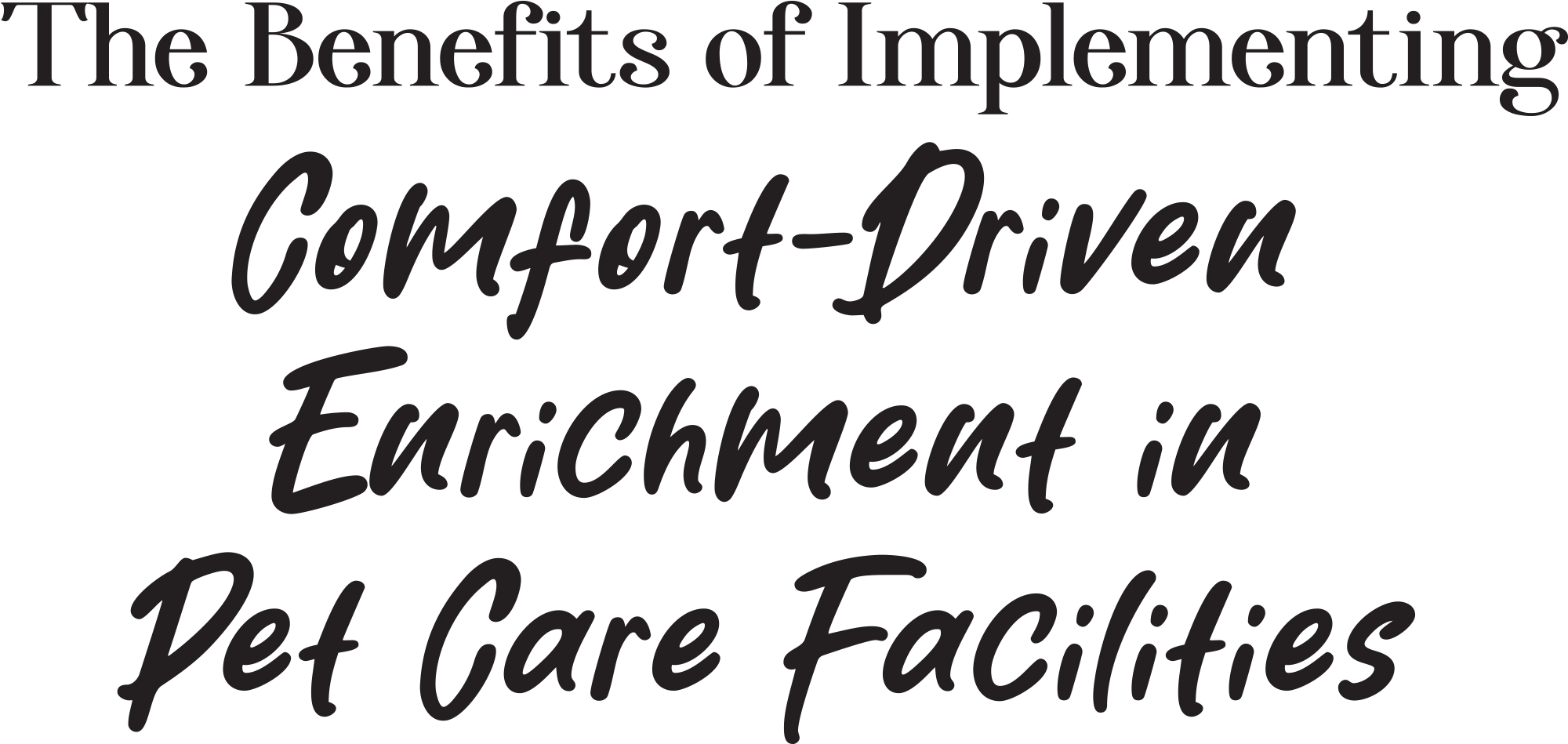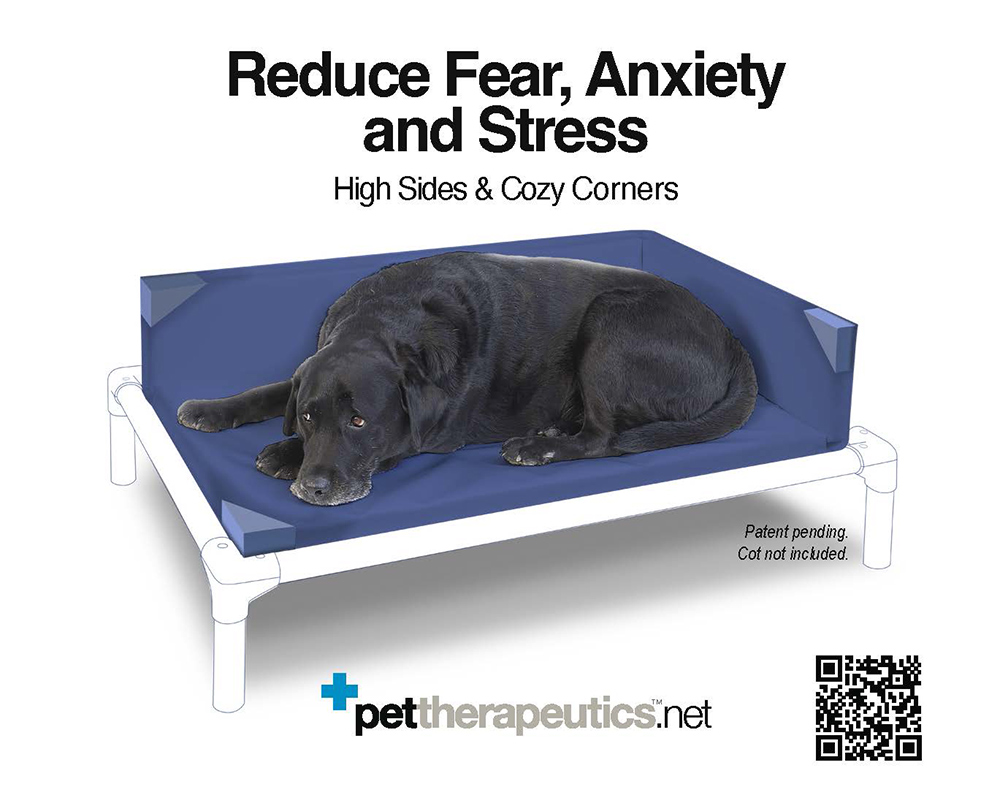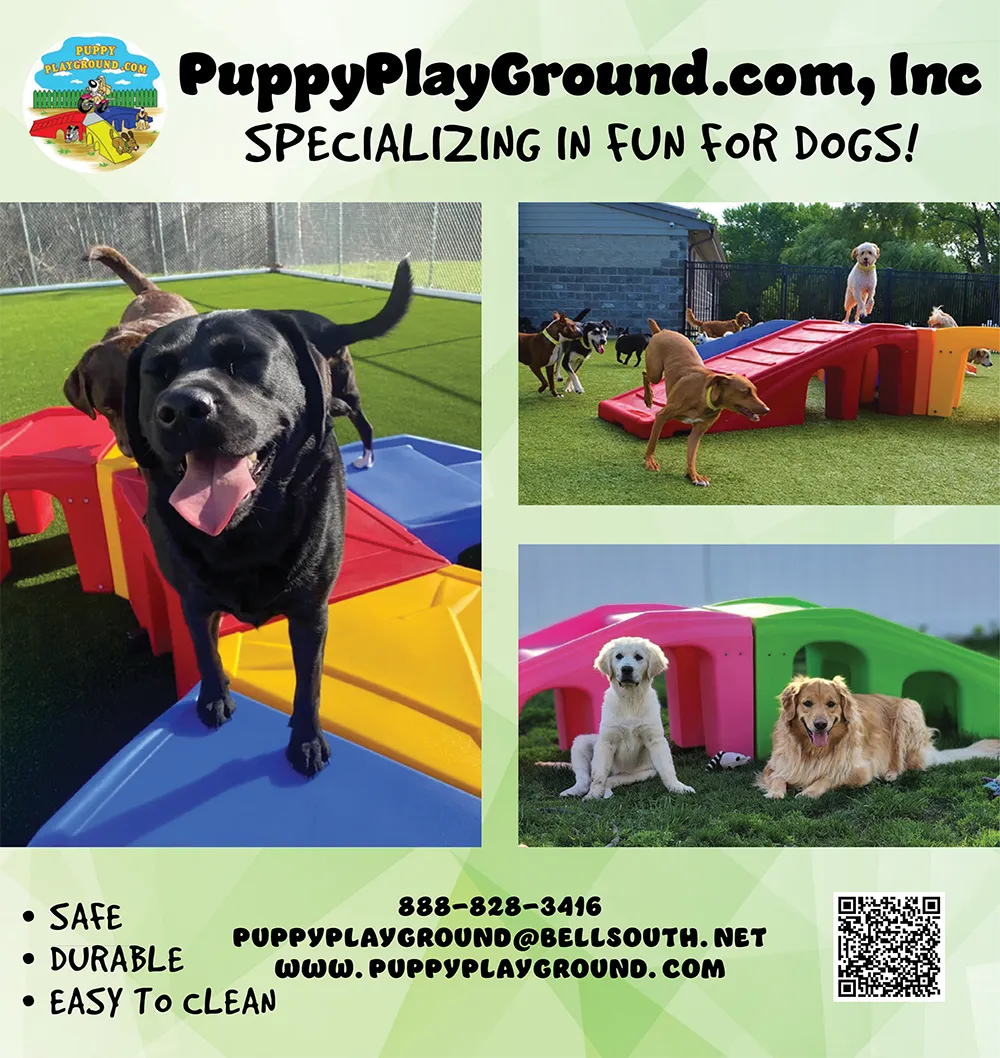

By Fred Silber
 he pet care industry is evolving as more facilities recognize the benefits of creating comfort-driven, home-like environments that support pet wellbeing. By integrating familiar elements and prioritizing standards, pet care facilities can transform into stress-reducing spaces that promote relaxation and better health. The adoption of comfort-driven enrichment practices not only enhances pet experiences, but also offers financial advantages, increasing facility success and client loyalty.
he pet care industry is evolving as more facilities recognize the benefits of creating comfort-driven, home-like environments that support pet wellbeing. By integrating familiar elements and prioritizing standards, pet care facilities can transform into stress-reducing spaces that promote relaxation and better health. The adoption of comfort-driven enrichment practices not only enhances pet experiences, but also offers financial advantages, increasing facility success and client loyalty.
This sense of security aligns with findings from the Journal of Veterinary Behavior, which noted that dogs in enriched environments showed more relaxed behaviors and reduced signs of anxiety. Canine Center for Behavioral Studies (CCBS) also emphasizes that soft bedding and enclosed spaces play a vital role in reducing stress and enhancing pet wellbeing.
Reducing stress has a direct impact on a pet’s health. Elevated cortisol levels from chronic stress can lead to various health risks, including immune suppression, digestive issues and behavioral changes. Safe, comfort-enriched environments in pet care facilities mitigate these effects by providing spaces that promote relaxation and decrease cortisol levels in pets, enabling them to return home healthier and happier.
Metrics indicate that facilities see significant financial returns after implementing comfort-driven practices. For example, pet care businesses report a 15% increase in revenue, with an opportunity to achieve a return on investment within just 60 days due to increased client loyalty and retention. By focusing on comfort-driven enrichment, facilities create a unique value proposition that sets them apart from standard boarding options, building a loyal client base and enhancing overall business success.
The shift towards comfort-driven enrichment in pet care facilities marks an important evolution in pet care. By incorporating home-like elements, facilities can create environments that cater to pets’ natural preferences for security and comfort. This approach has far-reaching benefits, from promoting pet health and emotional wellbeing to enhancing client satisfaction and improving facility profitability.
As pet owners increasingly seek boarding options that prioritize comfort and care, pet care facilities that integrate comfort-enriched environments will stand out in the industry. Businesses can continue to build on these practices by introducing innovative comfort-driven solutions, thereby ensuring that pets have positive, stress-free experiences even when away from home.
- Center for Canine Behavior Studies (CCBS): https://www.centerforcaninebehaviorstudies.org/
- Pet Therapeutics Case Study: https://pettherapeutics.net/case-study/
- Sensory Enrichment for Dogs – A Complete Guide: https://enrichyourdogslife.com/sensory-enrichment-for-dogs-a-complete-guide/
- Dare, P., & Strasser, R. (2023). Ruff Morning? The Use of Environmental Enrichment during an Acute Stressor in Kenneled Shelter Dogs. Animals, 13(9), 1506. https://doi.org/10.3390/ani13091506
Fred Silber is a seasoned professional with over 15 years of experience in developing consumer pet furniture. As the founder and CEO of Pet Therapeutics, he has been instrumental in creating comfort-driven solutions that enhance pets’ wellbeing. Fred’s innovative approach has led to the development of products that engage pets’ senses, particularly focusing on tactile enrichment. His work has significantly contributed to advancing the pet furniture industry, ensuring that pets enjoy both comfort and enrichment in their environments.

